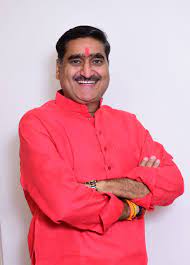A ground-level survey of the Aligarh parliamentary constituency was conducted by India News to analyse the performance of Satish Gautam, the Member of Parliament from Aligarh, and gather voters’ feedback about him. Satish Gautam, an Indian politician, secured a seat in the Lok Sabha, the lower house of India’s Parliament, representing Aligarh, Uttar Pradesh, in the 2014 and 2019 general elections as a member of the Bharatiya Janata Party (BJP). The BJP has a complete grip on this seat now. There are approximately 1.9 million voters in the Aligarh Lok Sabha. There are approximately 1.9 million voters in the Aligarh Lok Sabha.

On the scale of development, backwardness is evident here. There is a dire need for development in rural areas. The measure of development varies in all constituencies; politics seems more predominant in the name of development here. There are a total of 7 assembly seats here. Despite a higher number of Muslim voters in Aligarh, they are decisive for victory or defeat. There have been discussions on development issues in Aligarh for years. Development is visible in cities, but there is deprivation in rural areas in the name of development.
During elections, development often gets suppressed in communal and religious considerations. The people here have been facing many problems for years. The 2024 general elections are crucial for the Aligarh Lok Sabha.
The evaluation starts by breaking down the politician’s parliamentary performance, where they received a 62% rating. This encompasses attendance in the parliament, asking questions, utilizing funds, and special contributions. Ground performance, involving direct interaction with constituents, scored higher at 65%, indicating a stronger connection with the local populace.
Social media impact, a pivotal factor in contemporary politics, was evaluated at 66%, suggesting a positive reception or influence on digital platforms. The India News survey, weighted at 50%, contributed significantly to the overall assessment, resulting in a 56% score, indicating a relatively favorable perception among the surveyed populace.
Combining these facets, the final overall score tallied at 60.4%, marking a pass in this evaluation. However, the report rightly notes the unpredictability of voting patterns, highlighting that while the current assessment indicates a passing grade, it’s uncertain how the constituents will vote in the upcoming 2024 elections.
In conclusion, the detailed report provides valuable insights into the current perception of the politician. However, it’s crucial to note that electoral behaviors can shift, making it challenging to predict voting patterns definitively for future elections.

Voter Demographics
SC/ST 20%
Male 51%
Female 49%
Rural 58%
Urban 42%
Muslim 20%
Assembly Seats (8)
- Kher
- Barauli
- Atarauli
- Chharra
- Kol
- Aligarh
- Iglas
























